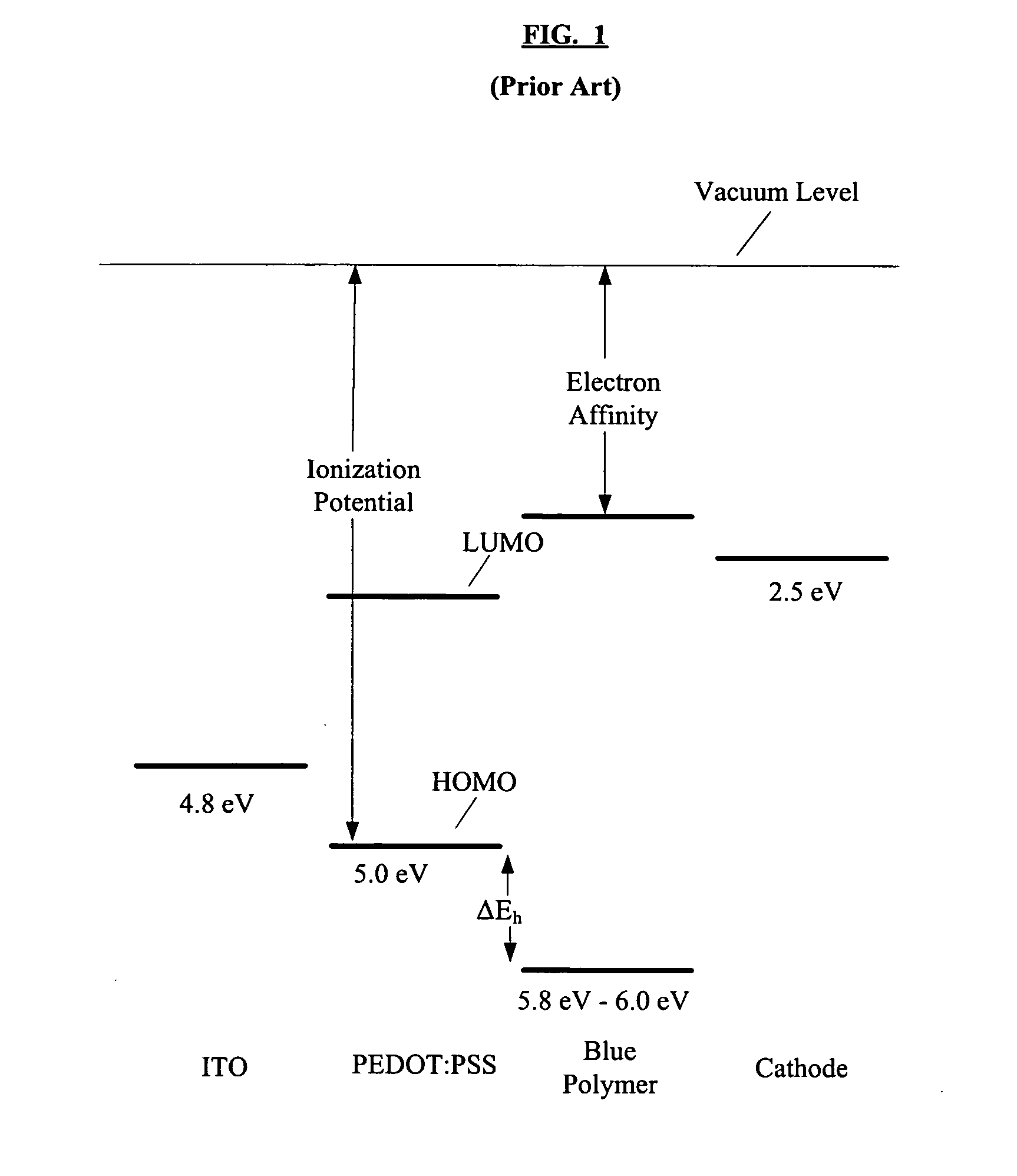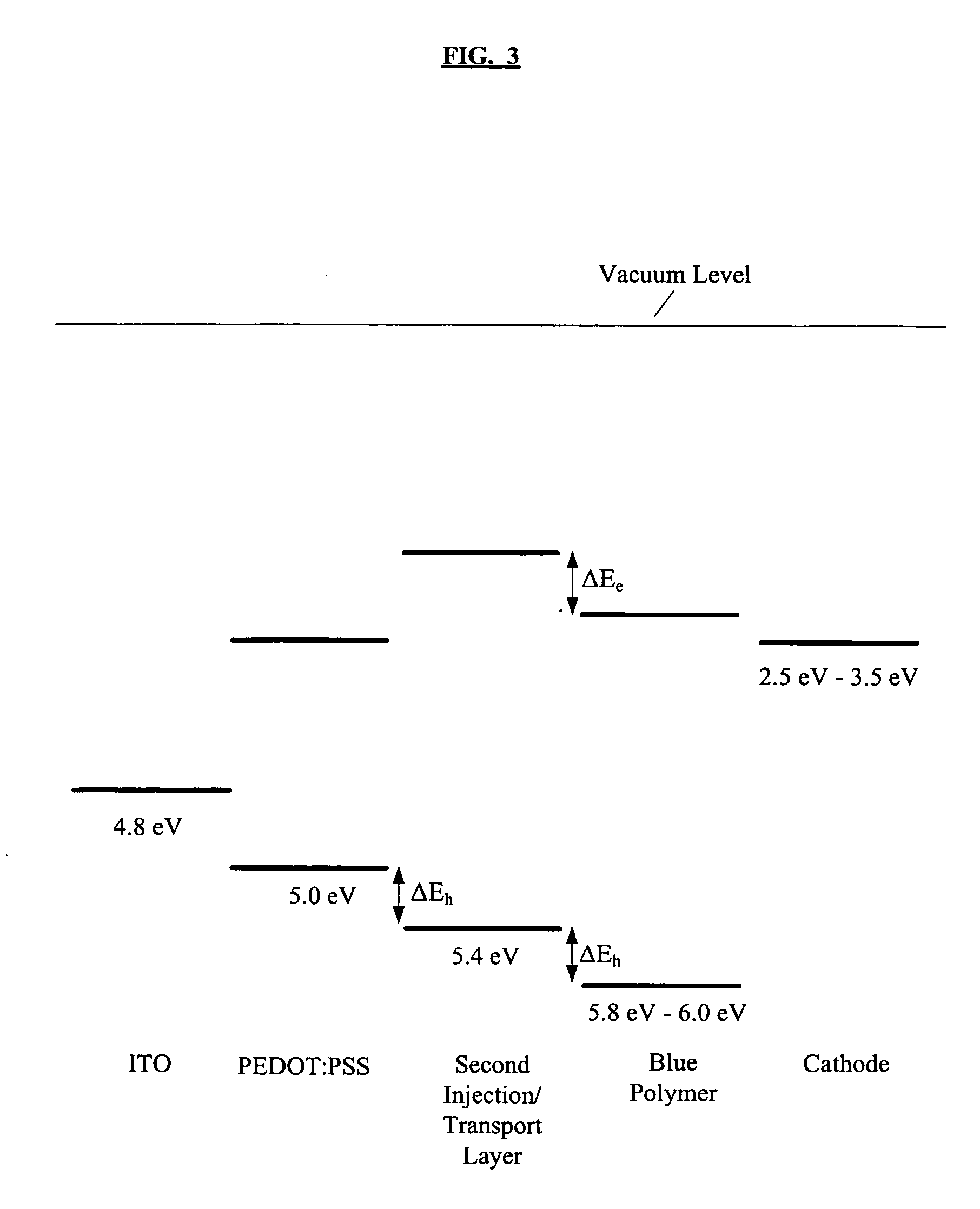Light emitting polymer devices with improved efficiency and lifetime
a technology of light-emitting polymer and efficiency, applied in the field of organic light-emitting diodes, can solve the problems of reducing device efficiency, reducing device lifetime, and reducing device efficiency
- Summary
- Abstract
- Description
- Claims
- Application Information
AI Technical Summary
Problems solved by technology
Method used
Image
Examples
first embodiment
[0017]FIG. 2 shows a cross-sectional view of an OLED device 205 according to the present invention. The OLED device 205 can be, for example, a pixel within an OLED display, or an element within an OLED light source used for general purpose lighting. In FIG. 2, an anode 211 is on a substrate 208. As used within the specification and the claims, the term “on” includes when there is direct physical contact between the two parts and when there is indirect contact between the two parts because they are separated by one or more intervening parts. A first hole injection / transport layer 214 is on the anode 211. A second hole injection / transport layer 217 is on the first hole injection / transport layer 214. An emissive layer 220 is on the second hole injection / transport layer 217. A cathode 223 is on the emissive layer 220. The OLED device 205 may include other layers such as, for example, insulating layers between the anode 211 and the first hole injection / transport layer 214, and / or between...
second embodiment
[0062] The first hole injection / transport layer may be comprised of materials such as PEDOT:PSS which contain many impurities. These impurities can contribute to decreased device performance such as, for example, shorter device lifetime. Also, the first hole injection / transport layer is a semiconductive material that increases the resistance of the device thus increasing the voltage needed to drive the device. Typically, as the operating voltage is increased, the device lifetime decreases. Therefore, in order to improve device performance and decrease the operating voltage, the first hole injection / transport layer can be eliminated. FIG. 5 shows a cross-sectional view of an OLED device 405 according to the present invention. In this embodiment, by including the second hole injection / transport layer within the device, the first hole injection / transport layer can be eliminated. In FIG. 5, an anode 411 is on a substrate 408. An injection / transport layer 417 is on the anode 411. An emis...
PUM
| Property | Measurement | Unit |
|---|---|---|
| thickness | aaaaa | aaaaa |
| thickness | aaaaa | aaaaa |
| HOMO energy | aaaaa | aaaaa |
Abstract
Description
Claims
Application Information
 Login to View More
Login to View More - R&D
- Intellectual Property
- Life Sciences
- Materials
- Tech Scout
- Unparalleled Data Quality
- Higher Quality Content
- 60% Fewer Hallucinations
Browse by: Latest US Patents, China's latest patents, Technical Efficacy Thesaurus, Application Domain, Technology Topic, Popular Technical Reports.
© 2025 PatSnap. All rights reserved.Legal|Privacy policy|Modern Slavery Act Transparency Statement|Sitemap|About US| Contact US: help@patsnap.com



